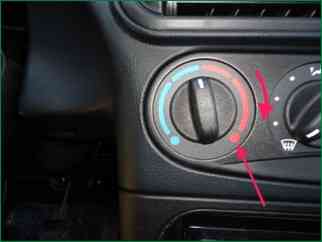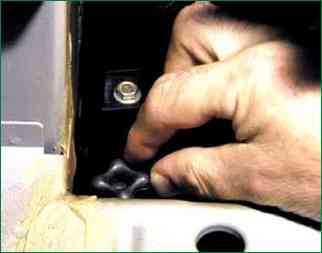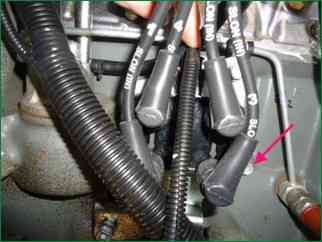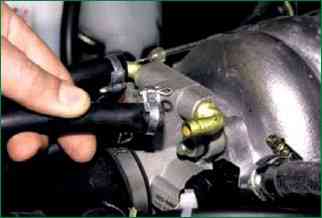According to the manufacturer's recommendation, the coolant should be replaced after two years of operation or after 60 thousand kilometers, whichever comes first
In addition, if the coolant has changed color to reddish, replace it immediately, as such a change indicates that inhibitory additives have been developed and the coolant has become aggressive towards the parts of the cooling system.
You will need: a “13” key, coolant, a clean rag, a container for draining coolant with a capacity of at least 10 liters.
Use factory recommended coolants. Change the coolant only when the engine is cold.
Coolant is toxic, so be careful when handling it. When starting the engine, the cap of the expansion tank must be closed.
Put the cap on the expansion tank tightly.
The expansion tank is under pressure when the engine is running, and therefore, if the plug is loosely screwed on, coolant may leak from under it.
Put the vehicle on a level surface.
If the site has a slope, park the car so that its front is higher than the back.
Remove the oil sump guard and engine mudguard.
You can leave the crankcase protection and the mudguard in place, in which case you will have to use some device to collect the drained liquid, otherwise it will inevitably spill over the area under the car.

Open the heater valve by turning the valve control knob clockwise until it stops.

Place a container under the drain plug of the cooling system radiator and unscrew the plug.

Remove the coolant expansion tank cap by turning it counterclockwise.

Unscrew the plug from the drain hole on the cylinder block and drain the remaining coolant from the channels of the cylinder block, after substituting a container under it.
Tighten the cork.
Fill the engine cooling system by pouring coolant into the expansion tank until the level reaches the "MAX" mark on the side of the tank.
Put the cap on the expansion tank
Start the engine and let it warm up to operating temperature (before the fans come on).
After that, stop the engine, check the coolant level and, if necessary, top up to the "MAX" mark.
While the engine is running, watch the coolant temperature on the gauge.
If the arrow has reached the red zone, and the fan does not turn on, turn on the heater and check how much air flows through it.
If the heater supplies heated air, it means that the fan is most likely defective, and if it is cold, it means that an air lock has formed in the engine cooling system.
To remove it, turn off the engine, let it cool and unscrew the cap of the expansion tank.
Start the engine, let it run for 3-5 minutes and close the cap of the expansion tank.
To ensure that air is bled from the cooling system, disconnect the hose from the throttle assembly before filling fluid.

When pouring liquid into the expansion tank, at the moment the liquid starts to flow out of the throttle assembly pipe, put the hose on the pipe and tighten the hose clamp.
After that, continue to add fluid to the norm.
To better fill the system without air pockets, periodically squeeze the radiator hoses with your hand.
After a few days of vehicle operation, after replacing the coolant, check its level.
Add coolant if necessary.
If, after a very short time, fresh antifreeze changes color from blue to brown, it means that you have filled in a fake, in which the manufacturers "forgot" to add corrosion inhibitors.
In addition, one of the signs of a fake is a sharp complete discoloration of antifreeze. The dye of high-quality antifreeze is very resistant and only darkens over time.
The antifreeze, tinted with linen blue, is discoloring. Such "antifreeze" must be replaced faster.





